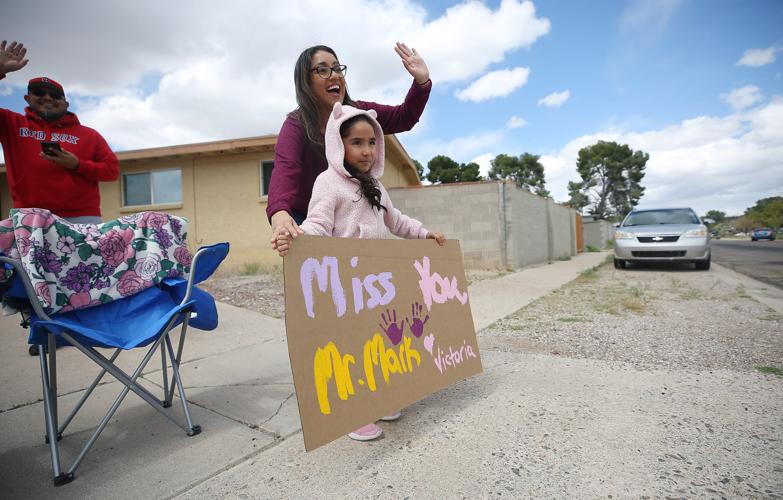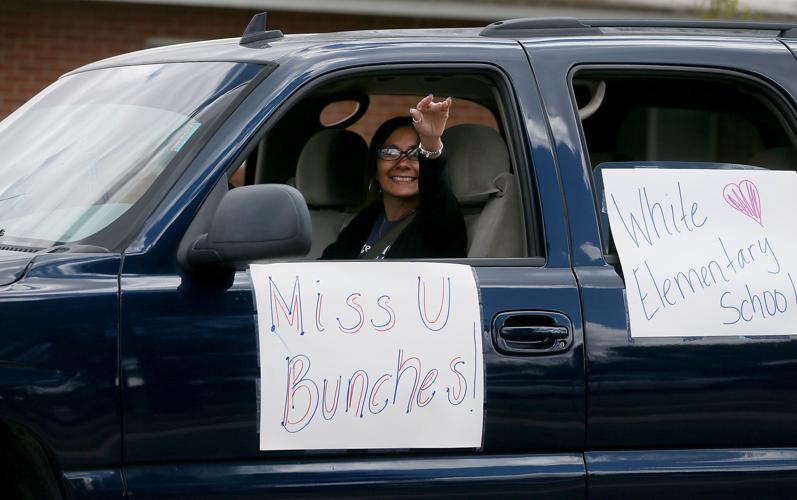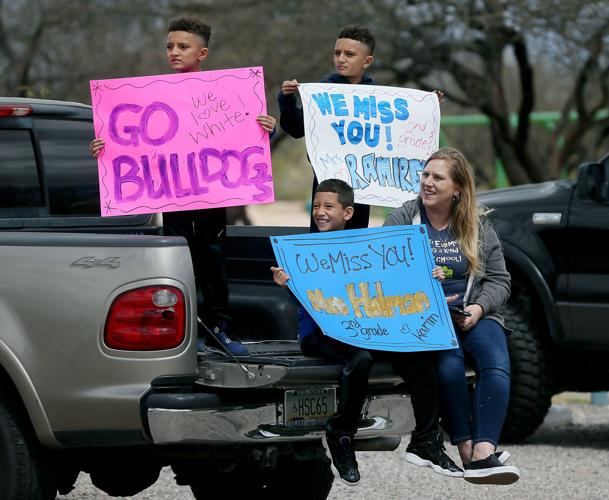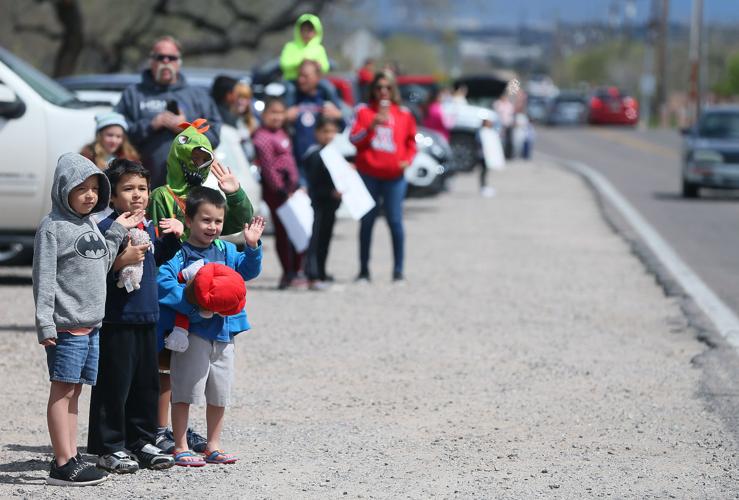Tending to students’ emotional well-being is at the forefront for many Tucson-area educators as schools began to roll out remote education this week.
Dozens of teachers and staff workers from TUSD’s White Elementary and Pistor Middle schools drove through the neighborhoods surrounding the campus at the end of the second week of school closures due to the coronavirus pandemic. They honked and waved, displayiing signs that said “We love you” and “We miss you” in many different ways.
Families stood on porches and waved back. Small groups of children ran to street corners, all craning for a glimpse of the teachers they used to see nearly every day.
At the nearby Winston Reynolds-Manzanita Park, a line of cars waited. Families crowded together on bumpers, in the back of trucks and poking out their sunroofs.
White Elementary first-grade teacher Liliana Ortiz, who organized the parade with her colleague Marivel Yanez, says teachers don’t have “sit-at-our-desk jobs.”
“It’s been hard, but I think these little things to do for the kids and community is exciting,” she said.
Schools across town have been doing car parades this week, a new tradition many are hoping to continue for the duration of the school closures.
While the closures are set to last until at least April 10, with the number of confirmed coronavirus cases only growing in Pima County and throughout the state, it’s not clear if the closures will be extended.
Remote learning is being administered both online and with printed packets as needed.
Educating on a digital platform is complicated by the fact that many children throughout Tucson don’t have access to either a computer or Wi-Fi at home. But in the Vail School District, spokeswoman Darcy Mentone says most families do have access to a smartphone, where they can watch videos and connect on social media and in virtual meeting spaces. Across Tucson, teachers are communicating with students through these digital spaces.
Eighth-grader Laurel Burkholder and her classmate at Civano Community School, a small K-8 school in Vail, led a virtual community time on a video conferencing platform, with about 50 families.
Moving the daily tradition from the school courtyard to tiny boxes on a screen, kids connected from their living rooms and kitchen tables, cuddled up with pets and squeezed onto their couches with their parents and siblings.
Laurel says she’s doing fine academically. The hardest part of the closures has been not seeing her teachers and friends.
“I can’t wait to go back,” she says.
Her mother, Margaret Burkholder, who’s also a teacher in the Vail School District, says during a time when people are encouraged to isolate to slow the spread of COVID-19, continuing the tradition of gathering is important.
“It’s bringing that normalcy to a very stressful time,” she said.
Burkholder said the closures are complicated for each of her four children. She worries about Laurel missing out on the big eighth-grade field trip, about her senior missing prom and graduation. And her college freshman was forced to move back home. The way the school has come together hasn’t made the situation easy, but it’s made it tolerable, she said.
Across Tucson, educators are getting creative with how they’re reaching students, from writing inspirational messages with sidewalk chalk in neighborhoods around Desert Willow Elementary to sending out postcards.
Desert Willow Principal Kendra Forgacs posts a video every morning on the school’s Facebook page. She makes announcements and tells jokes, with her own daughter popping in for punchlines. She says it’s important to keep those relationships between educators and children strong, even in a remote learning space.
In the Sunnyside School District, Sierra 2-8 Principal Tiffany Emerson posts daily videos from different parts of the school. The hands-on principal who is used to interacting with hundreds of children a day is alone in a hallway or a classroom singing songs she says are “intricate to the fabric of our culture.”
She exudes positivity in her videos and over the phone. But her voice breaks as she digs into the ways she’s trying to maintain their traditions from afar.
“I’m just trying to have a connection with the kids with things that are important,” she says. “So they know we still see them and we are family. The walls don’t define our family. The relationships define our school family.”







